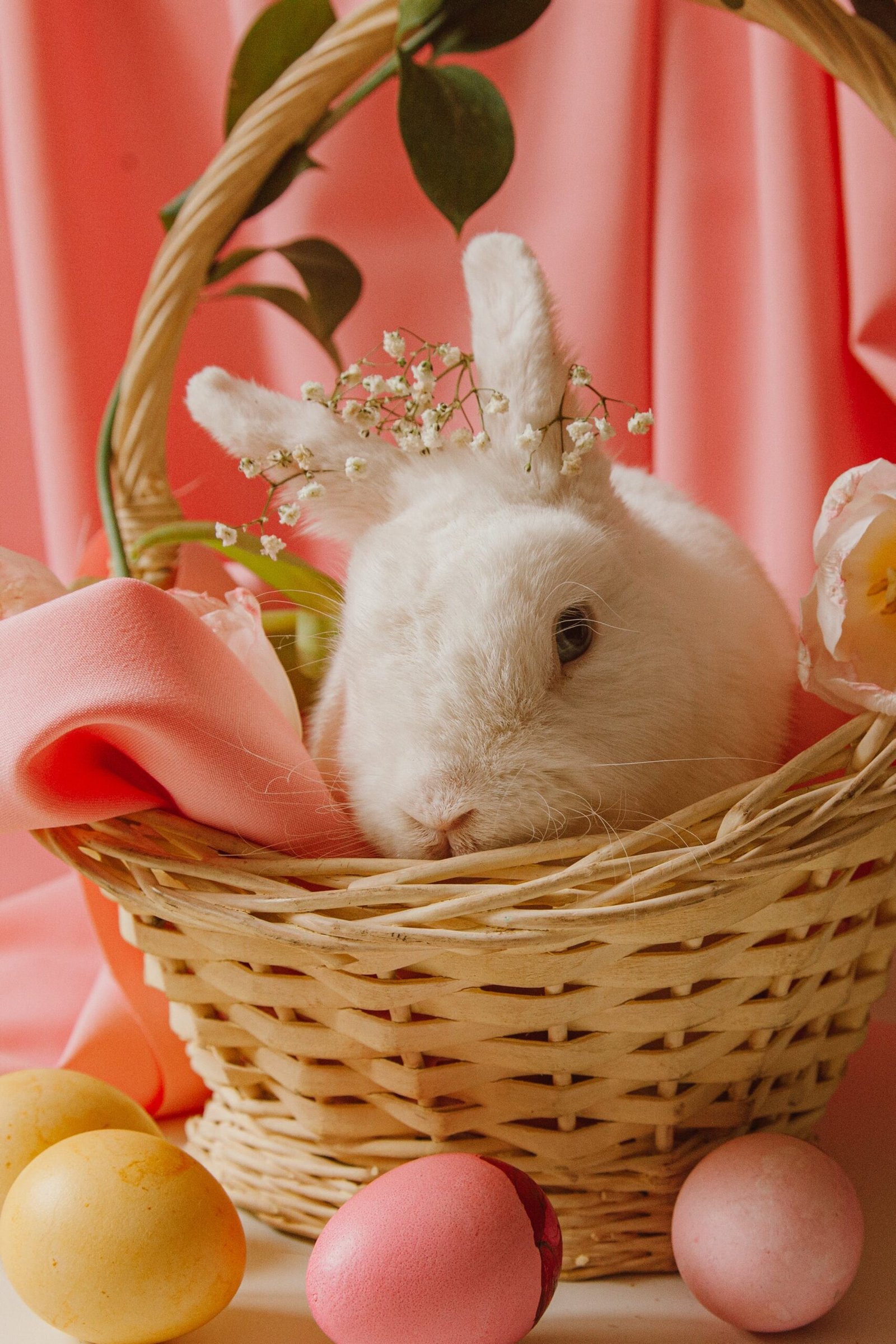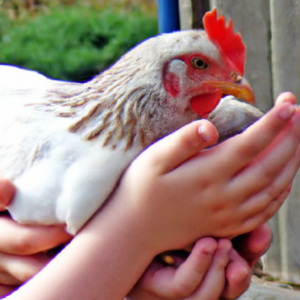
If you’ve ever thought about raising baby chicks, you may have wondered about the best conditions to ensure their health and well-being. Finding the ideal temperature for brooding baby chicks is crucial for their growth and development. Whether you’re a beginner or experienced poultry farmer, understanding the importance of providing the right warmth is essential. In this article, we will explore the optimal temperatures for brooding baby chicks, helping you create the perfect environment for your fluffy feathered friends to thrive.

The Importance of Temperature for Brooding Baby Chicks
When it comes to brooding baby chicks, temperature plays a critical role in their growth and development. As a chicken owner, it’s essential to understand the significance of maintaining the ideal temperature for your chicks to ensure their well-being and optimize their chances of thriving.
The Critical Role of Temperature in Brooding
For baby chicks, the first few weeks of their lives are crucial for their growth and development. During this time, they rely heavily on the heat provided by their environment, as they are not yet capable of regulating their body temperature effectively. The temperature in the brooding area serves as a substitute for the warmth they would naturally receive from their mother.
Appropriate temperature during the brooding phase is essential to promote healthy chick activity, encourage proper feather development, and prevent chilling or overheating. Failure to maintain the ideal temperature can have adverse effects on chick growth, overall health, and even survival.
The Effects of Incorrect Temperature on Baby Chicks
Incorrect temperature conditions can pose significant risks to the well-being of baby chicks. If the temperature is too high, chicks may experience overheating, dehydration, and in extreme cases, even death. Conversely, if the temperature is too low, chicks can suffer from chilling, reduced growth, weakened immune systems, and increased susceptibility to diseases.
Furthermore, inappropriate temperatures can impact chick behavior, resulting in decreased activity levels, reduced feed consumption, and stress. In order to provide the best possible conditions for your baby chicks, it is crucial to determine and maintain the ideal temperature throughout the brooding period.
Determining the Ideal Temperature for Brooding Baby Chicks
Setting the appropriate temperature range for brooding is vital to ensure the comfort and well-being of your chicks. Several factors should be considered when determining the ideal temperature, including the age of the chicks, outside temperature conditions, and the type of brooding equipment used.
Recommended Temperature Range
In general, the recommended temperature range for brooding baby chicks is between 90°F (32°C) and 95°F (35°C) during the first week of life. This temperature can be gradually reduced by approximately 5°F (2.8°C) each week until the chicks reach four weeks of age. After four weeks, the room temperature can suffice, typically around 70°F (21°C) to 75°F (24°C).
It’s important to note that different chicken breeds may have slightly different temperature requirements. It is advisable to consult breed-specific guidelines or seek advice from experienced poultry farmers to ensure you meet the specific needs of your chicks.
Factors to Consider for Temperature Setting
When determining the temperature for brooding, it is crucial to take into account various factors that can affect the heat requirements of your baby chicks. These factors include the breed of chicks, their hatching conditions, ambient temperature, and the type and quality of brooder equipment used.
Additionally, it’s important to monitor the body language and behavior of the chicks to assess their comfort level. Over time, you will develop a better understanding of their cues, allowing you to adjust the temperature more accurately.

Brooder Equipment and Temperature Control
Investing in suitable brooder equipment and implementing effective temperature control measures are essential to create an optimal environment for your baby chicks.
Types of Brooder Equipment
There are several types of brooder equipment available, each offering different advantages and disadvantages. Common types include heat lamps, heat plates, and radiant tube brooders. Heat lamps are often used as a traditional heating source and are relatively easy to set up. Heat plates provide a more natural heat source and mimic the warmth of a mother hen. Radiant tube brooders, on the other hand, offer more even heating across the brooding area.
Consider the pros and cons of each type of brooder equipment, as well as their suitability based on your specific circumstances and preferences.
Methods of Temperature Control
In addition to choosing the right brooder equipment, implementing effective temperature control methods is vital for maintaining the ideal temperature for your chicks. Here are a few methods commonly used by poultry farmers:
-
Adjusting the height of the heat source: By raising or lowering the heat source, you can control the temperature within the brooding area. Lowering the heat source increases the temperature, while raising it reduces the temperature.
-
Using a thermometer: Regularly monitoring the temperature using a reliable thermometer helps you assess whether the brooding area is within the desired temperature range. Consider using multiple thermometers to obtain accurate readings from various spots in the brooder.
-
Heat regulation through ventilation: Adequate airflow and ventilation are crucial to prevent overheating and maintain a fresh environment for the chicks. Adjusting ventilation openings or using fans can help regulate temperature effectively.
Monitoring and Adjusting Temperature
Temperature monitoring and adjustment are ongoing processes throughout the brooding period. Regularly observing the temperature and chick behavior enables you to make necessary adjustments to maintain the ideal conditions.
Regular Temperature Monitoring
Consistent temperature monitoring is crucial to ensure that the brooding area remains within the recommended temperature range. Use reliable thermometers and check the readings regularly, ideally multiple times a day, to stay aware of any fluctuations.
It’s important to remember that different areas of the brooding space may experience slight temperature variations. By monitoring multiple spots, you can identify any potential hot or cold spots and take appropriate action to maintain an even temperature distribution.
Adjusting Temperature based on Chick Behavior
Chick behavior can serve as a valuable indicator of their comfort level with the current temperature conditions. Consider the following factors related to chick behavior when determining whether adjustments are necessary:
-
Active and comfortable chicks: If the chicks are actively exploring the brooding area, eating, and socializing comfortably, it is a good indication that the temperature is within the appropriate range.
-
Huddling or seeking warmth: If the chicks huddle together in a tight group or continuously gather under the heat source, it suggests that the temperature may be too low. Adjust the temperature slightly higher to provide additional warmth.
-
Panting or stretching wings: If the chicks show signs of panting, spreading their wings away from their bodies, or moving away from the heat source, it indicates that the temperature may be too high. In such cases, lower the temperature slightly to prevent overheating.
By closely observing the behavior of your baby chicks, you can make informed decisions about adjusting the temperature to ensure their comfort and well-being.

Understanding Chick Behavior and Signs of Discomfort
To accurately assess chick behavior and determine their comfort level, it’s important to understand what constitutes normal behavior and recognize signs of discomfort or distress.
Normal Chick Behavior
Normal chick behavior includes being active, curious, and social. Chicks will engage in activities such as pecking, scratching, and exploring their surroundings. They will also exhibit healthy feeding patterns, drink water regularly, and have bright eyes and alertness.
Signs of Discomfort or Overheating
Signs of discomfort or overheating in chicks may include panting, spreading wings away from their bodies, attempting to move away from the heat source, or excessive drinking and increased water consumption. In extreme cases, chicks may also appear lethargic, weak, or exhibit rapid breathing.
If you observe any of these symptoms, it is important to take immediate action to reduce the temperature in the brooder and ensure the chicks are not overheating.
Signs of Cold or Chilling
Chicks that are too cold will exhibit signs of distress as well. They may huddle together, peep loudly, or attempt to burrow under one another for warmth. Cold chicks may also exhibit shivering or lethargy. If you notice these signs, it is essential to increase the temperature in the brooder to provide the necessary warmth.
Maintaining the Ideal Temperature throughout Brooding
Maintaining the ideal temperature for your baby chicks is an ongoing process throughout the brooding period. To ensure their comfort and well-being, it’s important to consider gradual temperature reduction and adapt to external temperature changes.
Gradual Temperature Reduction
As the chicks grow older and become more capable of regulating their body temperature, it is important to gradually reduce the temperature in the brooding area. Reduce the temperature by approximately 5°F (2.8°C) each week until the chicks reach four weeks of age.
This gradual reduction allows the chicks to gradually acclimate to ambient temperatures, preparing them for the transition to the outdoor environment when they are ready to leave the brooder.
Adapting to External Temperature Changes
External temperature changes, such as seasonal fluctuations, can impact the temperature requirements of your baby chicks. It’s essential to monitor the outside temperature and adjust the brooding area’s internal temperature accordingly.
During colder months, you may need to provide additional heat sources to maintain the optimum temperature. Conversely, during warmer months, you may need to increase ventilation and ensure proper airflow to prevent overheating.
By adapting to external temperature changes, you can maintain a consistently comfortable environment for your baby chicks.

Potential Challenges and Solutions in Temperature Control
While striving to maintain the ideal temperature, you may encounter various challenges that could impact the temperature within the brooding area. Being prepared and knowing how to address these challenges can help ensure optimal temperature conditions.
Power Outages or Equipment Failure
Power outages or equipment failure can result in sudden temperature drops or spikes, posing a risk to the chicks’ well-being. It is essential to have a backup plan in place to deal with such situations.
Consider investing in a generator or alternative power source to provide heat during power outages. Additionally, having spare brooder equipment readily available can help you quickly replace any faulty or malfunctioning equipment.
Cold Drafts or Hot Spots
A poorly insulated brooding area may experience cold drafts or hot spots, leading to uneven temperature distribution. Inspecting the brooding space for potential drafts and sealing any gaps or cracks can help prevent cold air from entering.
Similarly, identifying hot spots and adjusting the heat source or using insulation materials to distribute heat more evenly can prevent localized overheating.
Brooder Set-Up for Optimal Temperature Regulation
The set-up of your brooding area significantly impacts temperature regulation and overall chick comfort. Adequate consideration must be given to factors such as brooder location, insulation, and ventilation.
Choosing the Right Brooder Location
Selecting a suitable location for your brooder is crucial for temperature regulation. Ideally, the brooding area should be situated in a quiet, draft-free space away from direct sunlight or sources of extreme temperature fluctuations.
Ensuring that the brooder is placed on a level surface away from damp or wet areas is also important. This will help maintain consistent temperatures and prevent potential health issues for the chicks.
Proper Insulation and Ventilation
Insulation and ventilation play a vital role in maintaining the desired temperature within the brooding area. Proper insulation helps conserve heat during colder periods, while effective ventilation ensures that the air remains fresh and prevents overheating.
Consider insulating the brooding area with materials such as straw, shavings, or insulated panels to minimize heat loss. Additionally, providing adjustable ventilation openings or using fans can help regulate temperature and maintain a comfortable environment for the chicks.
Effects of Improper Temperature on Chick Growth and Health
Failure to maintain the appropriate temperature for baby chicks can have significant consequences on their growth and overall health.
Impact on Growth and Development
Proper temperature regulation is crucial for optimal chick growth and development. Chicks that experience inconsistent or incorrect temperatures may exhibit stunted growth, delayed feather development, and difficulties in achieving proper body weight.
Improper temperatures can also impact the chicks’ ability to digest food efficiently, leading to suboptimal nutrient absorption and potential nutrient deficiencies.
Increased Risk of Health Issues
In addition to growth concerns, incorrect temperatures can weaken the chicks’ immune systems and make them more susceptible to various health issues. Overheating can lead to excessive stress, dehydration, respiratory problems, and can even contribute to the spread of infectious diseases.
On the other hand, chicks subjected to cold temperatures are at risk of respiratory infections, weakened immune systems, and reduced ability to fight off diseases.
By prioritizing proper temperature regulation, you can help promote robust growth and reduce the risks of health issues in your baby chicks.
Best Practices for Achieving and Maintaining the Ideal Temperature
As a poultry farmer, implementing best practices for temperature regulation is crucial to ensure your baby chicks thrive. Here are a few practices to consider:
Using Multiple Thermometers
To obtain accurate temperature readings from various spots within the brooder, it is recommended to use multiple thermometers. Position thermometers at different locations, ensuring they are easily visible and accessible for regular monitoring.
This practice will help you identify any temperature inconsistencies and make informed decisions about temperature adjustment.
Seeking Expert Advice
Maintaining the ideal temperature for brooding baby chicks can be a complex task, especially for novice poultry farmers. Seeking advice from experienced poultry farmers or consulting with veterinarians who specialize in poultry can provide valuable insights and guidance.
These experts can offer breed-specific recommendations, troubleshoot temperature control issues, and help you address any challenges you may encounter during the brooding process.
In conclusion, understanding the importance of temperature in brooding baby chicks is essential for their overall well-being and development. By adhering to recommended temperature ranges, investing in suitable brooder equipment, and monitoring the chicks’ behavior closely, you can create an optimal environment that promotes healthy growth and reduces the risks of health issues.
By implementing best practices, seeking expert advice when needed, and maintaining diligence in temperature regulation, you can ensure the comfort and health of your baby chicks as they transition into healthy, thriving adult chickens.







